Feasibility Analysis and Performance Evaluation of a Novel Power-Split Flywheel Hybrid Vehicle
Abstract
1. Introduction
2. Lever Analogy and PS-FHV Working Principles
2.1. The PS-FHV Lever Analogy
2.2. Working Principles
- (1)
- : the FESS node is located between the engine and the final drive. In this case, the engine and final drive node power is transferred to the FESS power, which is not useful for the FHV.
- (2)
- (): the FESS (engine) node and final drive node are at the same point of the lever. In this case, the power of the FESS (engine) is transmitted to the axle, and the engine (FESS) becomes independent from the operation, which is a flywheel drive with a neutral engine (engine drive mode with flywheel neutral).
- (3)
- : the final drive node is between the engine and the FESS. In the assist driving mode, the engine and FESS power are merged into the axle. If the engine or FESS is not operating in this condition, then the system runs in the flywheel drive or engine drive/mode.
- (4)
- : the engine node is between the FESS and the final drive node, i.e., the engine power is divided between the FESS and final drive, representing a recharge driving mode.
3. PS-FHV Modeling
3.1. Kinematics
3.2. Dynamics
4. Simulation of the PS-FHV
4.1. Simulation Settings
4.2. Transmission Speed-Torque Curve
4.3. Feasibility Assessment and Acceleration Performance
4.4. Fuel Economy
4.5. Comparative Study
5. Conclusions
Author Contributions
Funding
Conflicts of Interest
Appendix A
Appendix B
| Variable Name | Value | |
|---|---|---|
| Conventional vehicle | Transmission mass | 114 kg |
| Transmission ratios | 1st gear: 3.57 | |
| 2nd gear: 2 | ||
| 3rd gear: 1.33 | ||
| 4th gear: 1 | ||
| 5th gear 0.75 | ||
| Final drive ratio | 3.77 | |
| Transmission efficiency | 92% | |
| PHEV vehicle | Motor mass | 60 kg |
| Motor power | 49 kW | |
| Battery mass | 210 | |
| Battery max power | 50 kW | |
| PS-HEV vehicle | Motor mass | 57 |
| Motor power | 30 kW | |
| Generator mass | 33 | |
| Generator power | 15 kW | |
| Battery mass | 138 | |
| Battery power | 51 kW |
References
- Chan, C.C. The State of the Art of Electric, Hybrid, and Fuel Cell Vehicles. Proc. IEEE 2007, 95, 704–718. [Google Scholar] [CrossRef]
- Baseley, S.; Ehret, C.; Greif, E.; Kliffken, M.G. Hydraulic Hybrid Systems for Commercial Vehicles; SAE International: Warrendale, PA, USA, 2007. [Google Scholar]
- Hebner, R.; Beno, J. Applications Ranging from Railroad Trains to Space Stations. IEEE Spectr. 2002, 39, 46–51. [Google Scholar] [CrossRef]
- Lukic, S.M.; Cao, J.; Bansal, R.C.; Rodriguez, F.; Emadi, A. Energy Storage Systems for Automotive Applications. IEEE Trans. Ind. Electron. 2008, 55, 2258–2267. [Google Scholar] [CrossRef]
- Ibrahim, H.; Ilinca, A.; Perron, J. Energy storage systems—Characteristics and comparisons. Renew. Sustain. Energy Rev. 2008, 12, 1221–1250. [Google Scholar] [CrossRef]
- Kapoor, R.; Parveen, C.M. Comparative study on various KERS. In Proceedings of the World Congress on Engineering, London, UK, 3–5 July 2013. [Google Scholar]
- Bolund, B.; Bernhoff, H.; Leijon, M. Flywheel Energy and Power Storage Systems. Renew. Sustain. Energy Rev. 2007, 11, 235–258. [Google Scholar] [CrossRef]
- Dhand, A.; Pullen, K. Review of Flywheel Based Internal Combustion Engine Hybrid Vehicles. Int. J. Automot. Technol. 2013, 14, 797–804. [Google Scholar] [CrossRef]
- Hansen, J.G. An Assessment of Flywheel High Power Energy Storage Technology for Hybrid Vehicles; Oak Ridge National Laboratory (ORNL): Oak Ridge, TN, USA, 2011. [Google Scholar]
- Diego-Ayala, U.; Martinez-Gonzalez, P.; McGlashan, N.; Pullen, K.R. The Mechanical Hybrid Vehicle: An Investigation of a Flywheel-Based Vehicular Regenerative Energy Capture System. Proc. Inst. Mech. Eng. Part D J. Automob. Eng. 2008, 222, 2087–2101. [Google Scholar] [CrossRef]
- Cross, D.; Brockbank, C. Mechanical Hybrid System Comprising a Flywheel and CVT for Motorsport and Mainstream Automotive Applications; SAE International: Warrendale, PA, USA, 2009. [Google Scholar]
- Armbruster, D.; Hennings, S. Porsche GT3 R Hybrid Prototype and Race Lab. ATZautotechnology 2011, 11, 12–17. [Google Scholar] [CrossRef]
- Schilke, N.A.; Dehart, A.O.; Hewko, L.O.; Matthews, C.C.; Pozniak, D.J.; Rohde, S.M. The Design of an Engine-Flywheel Hybrid Drive System for a Passenger Car; SAE International: Warrendale, PA, USA, 1984. [Google Scholar]
- Schilke, N.A.; DeHart, A.O.; Hewko, L.O.; Matthews, C.C.; Pozniak, D.J.; Rohde, S.M. The Design of an Engine-Flywheel Hybrid Drive System for a Passenger Car. Proc. Inst. Mech. Eng. Part D Transp. Eng. 1986, 200, 231–248. [Google Scholar] [CrossRef]
- Van Berkel, K.; Hofman, T.; Vroemen, B.; Steinbuch, M. Optimal Control of a Mechanical Hybrid Powertrain. IEEE Trans. Veh. Technol. 2012, 61, 485–497. [Google Scholar] [CrossRef]
- Shen, S.; Veldpaus, F.E. Analysis and Control of a Flywheel Hybrid Vehicular Powertrain. IEEE Trans. Control Syst. Technol. 2004, 12, 645–660. [Google Scholar] [CrossRef]
- Shen, S.; Serrarens, A.; Steinbuch, M.; Veldpaus, F. Coordinated Control of a Mechanical Hybrid Driveline with a Continuously Variable Transmission. JSAE Rev. 2001, 22, 453–461. [Google Scholar] [CrossRef]
- Van Druten, R.M. Transmission Design of the Zero Inertia Powertrain; Technische Universiteit Eindhoven: Eindhoven, The Netherlands, 2001. [Google Scholar]
- Son, H.; Park, K.; Hwang, S.; Kim, H. Design Methodology of a Power Split Type Plug-In Hybrid Electric Vehicle Considering Drivetrain Losses. Energies 2017, 10, 437. [Google Scholar] [CrossRef]
- Cheong, K.L.; Li, P.Y.; Chase, T.R. Optimal Design of Power-Split Transmissions for Hydraulic Hybrid Passenger Vehicles. In Proceedings of the 2011 American Control Conference, San Francisco, CA, USA, 29 June–1 July 2011. [Google Scholar]
- Van Druten, R.M.; van Tilborg, P.G.; Rosielle, P.C.J.N.; Schouten, M.J.W. Design and Constriction Aspects of a Zero Inertia CVT for Passenger Cars II—Design and Constriution Aspects of a Zero Inertia CVT for Passenger Cars. Int. J. Automot. Technol. 2000, 1, 42–47. [Google Scholar]
- Benford, H.L.; Leising, M.B. The Lever Analogy: A New Tool in Transmission Analysis; SAE International: Warrendale, PA, USA, 1981. [Google Scholar]
- Mahoney, J.E.; Maguire, J.M.; Bai, S. Ratio Changing the Continuously Variable Transmission; SAE International: Warrendale, PA, USA, 2004. [Google Scholar]
- Kim, S.J.; Kim, K.-S.; Kum, D. Feasibility Assessment and Design Optimization of a Clutchless Multimode Parallel Hybrid Electric Powertrain. IEEE/ASME Trans. Mechatron. 2016, 21, 774–786. [Google Scholar] [CrossRef]
- Kim, S.J.; Song, C.; Kim, K.-S.; Yoon, Y.-S. Analysis of the Shifting Behavior of a Novel Clutchless Geared Smart Transmission. Int. J. Automot. Technol. 2014, 15, 125–134. [Google Scholar] [CrossRef]
- Ruan, J.; Zhang, N.; Walker, P. Comparing of Single Reduction and CVT Based Transmissions on Battery Electric Vehicle. In Proceedings of the 14th IFToMM World Congress in Mechanism and Machine Science, Taipei, Taiwan, 25–30 October 2015; pp. 610–618. [Google Scholar]
- Yamsani, A. Gradeability for Automobiles. IOSR J. Mech. Civ. Eng. 2014, 11, 35–41. [Google Scholar] [CrossRef]
- Paganelli, G.; Delprat, S.; Guerra, T.M.; Rimaux, J.; Santin, J.J. Equivalent Consumption Minimization Strategy for Parallel Hybrid Powertrains. IEEE Veh. Technol. Conf. 2002, 4, 2076–2081. [Google Scholar]
- Sciarretta, A.; Back, M.; Guzzella, L. Optimal Control of Parallel Hybrid Electric Vehicles. IEEE Trans. Control Syst. Technol. 2004, 12, 352–363. [Google Scholar] [CrossRef]
- Markel, T.; Brooker, A.; Hendricks, T.; Johnson, V.; Kelly, K.; Kramer, B.; O’Keefe, M.; Sprik, S.; Wipke, K. ADVISOR: A Systems Analysis Tool for Advanced Vehicle Modelling. J. Power Sources 2002, 110, 255–266. [Google Scholar] [CrossRef]
- Wipke, K.B.; Cuddy, M.R.; Burch, S.D. ADVISOR 2.1: A User-Friendly Advanced Powertrain Simulation Using a Combined Backward/Forward Approach. IEEE Trans. Veh. Technol. 1999, 48, 1751–1761. [Google Scholar] [CrossRef]
- 2018 Toyota Camry MPG & Price. Available online: https://www.toyota.com/camry/features/mpg/2559/2561/2560 (accessed on 13 May 2018).

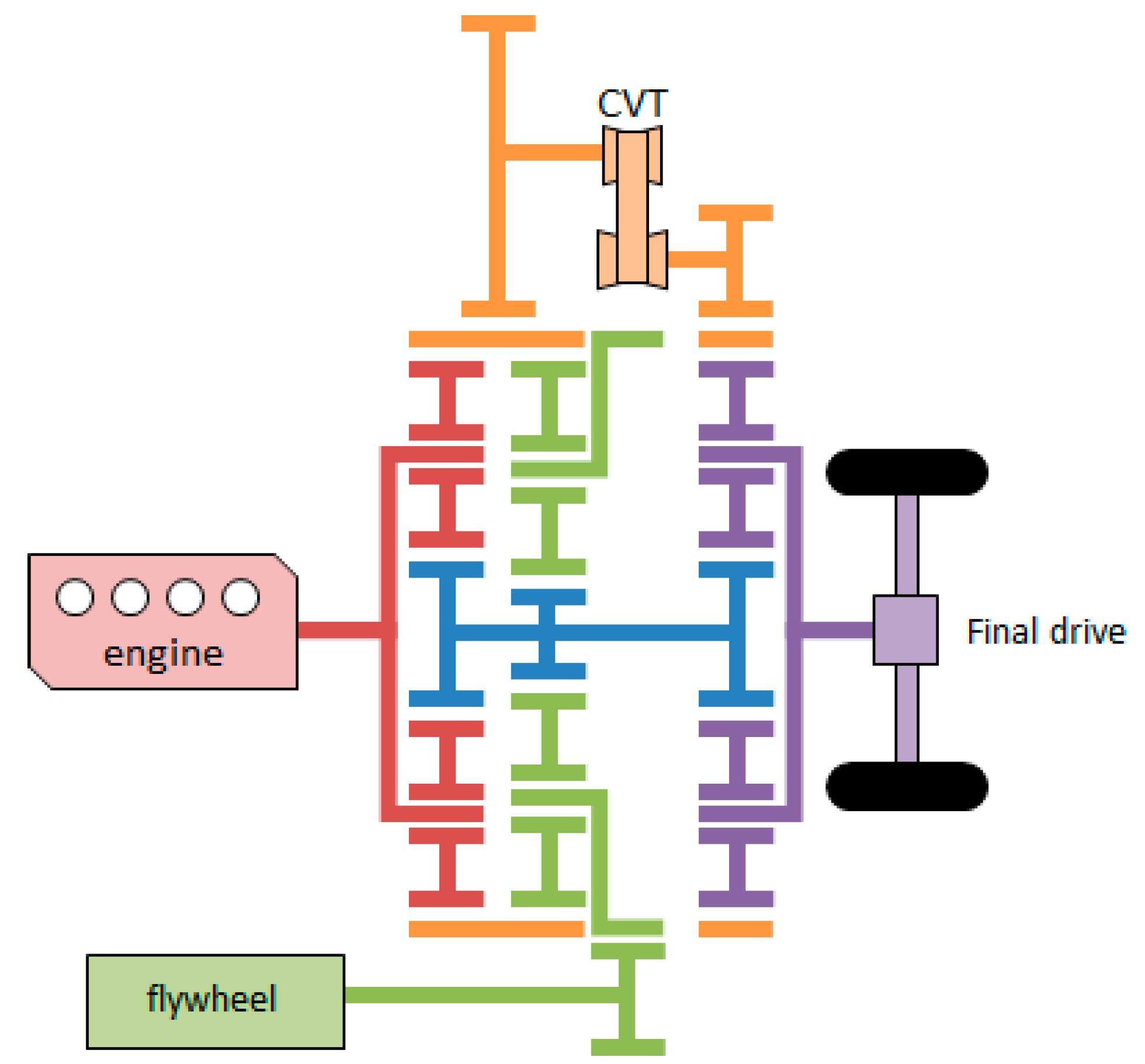
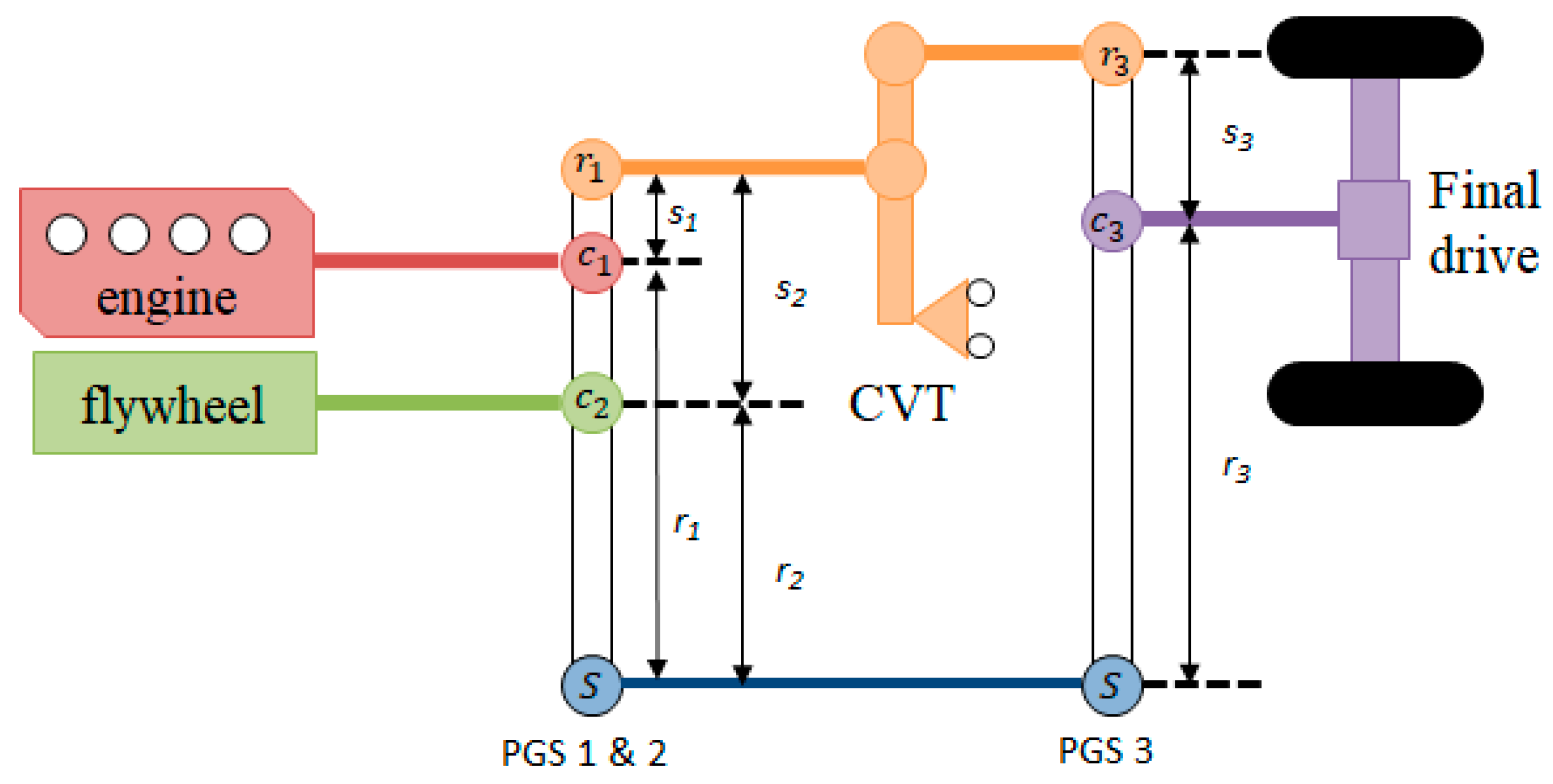
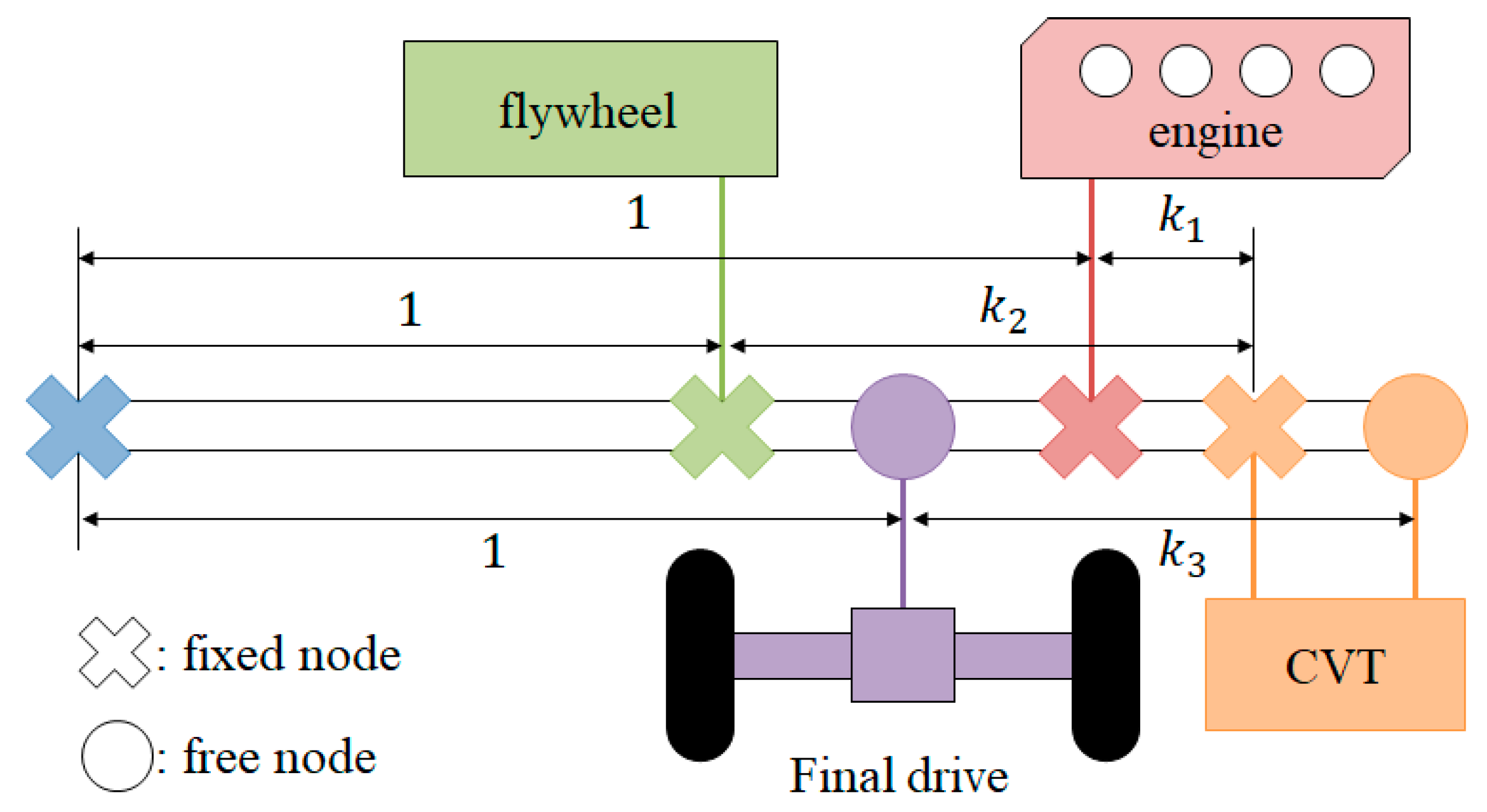







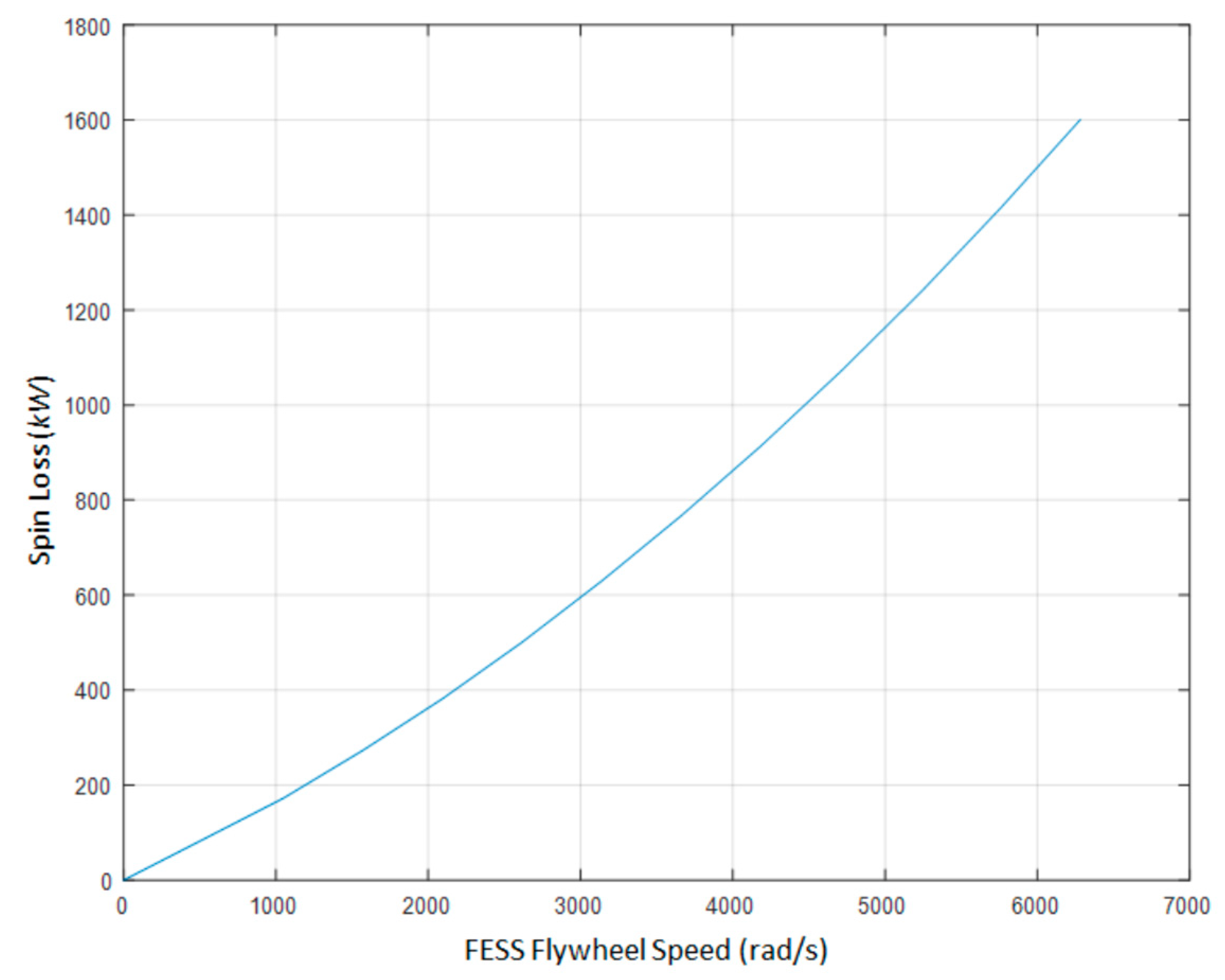
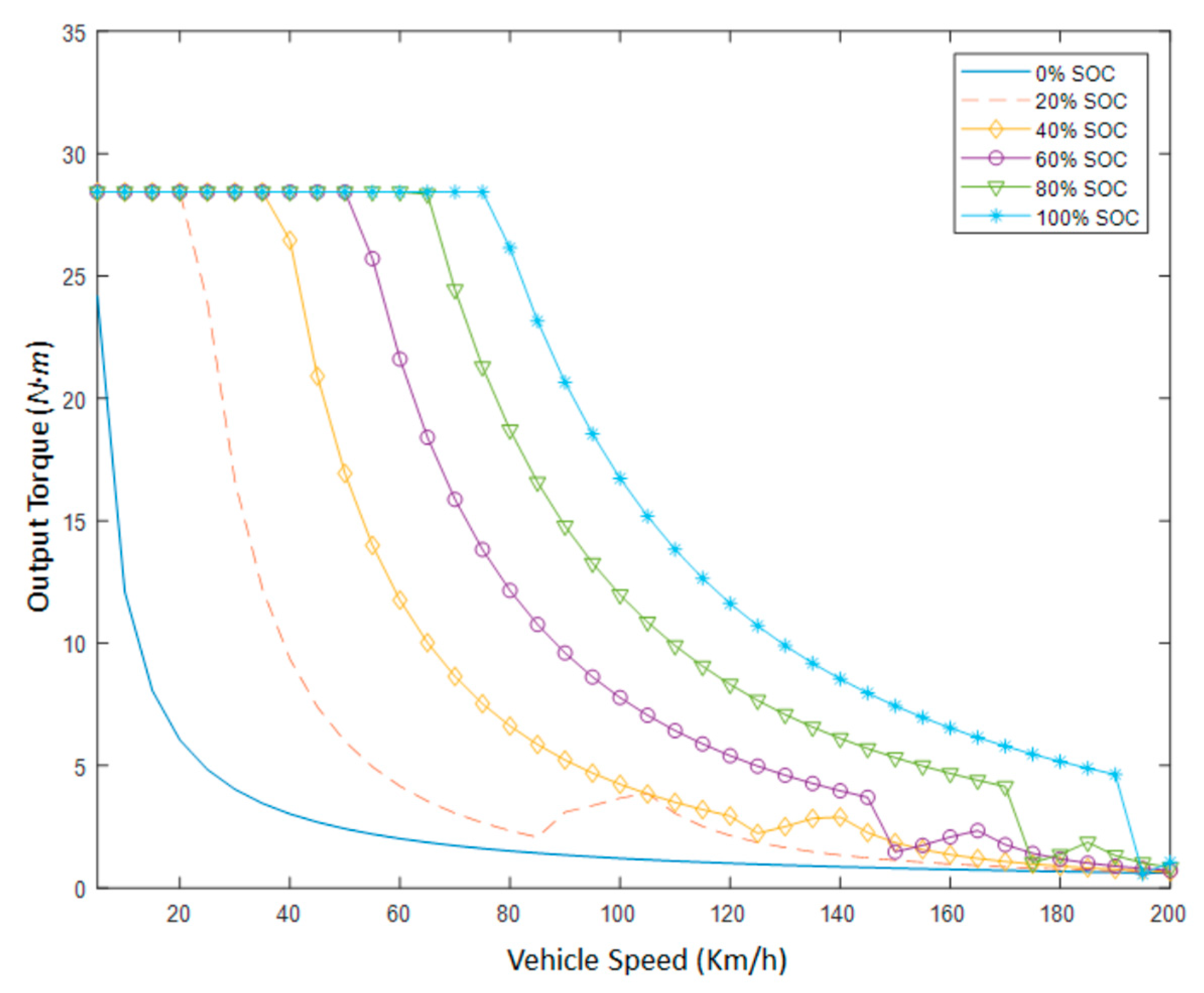


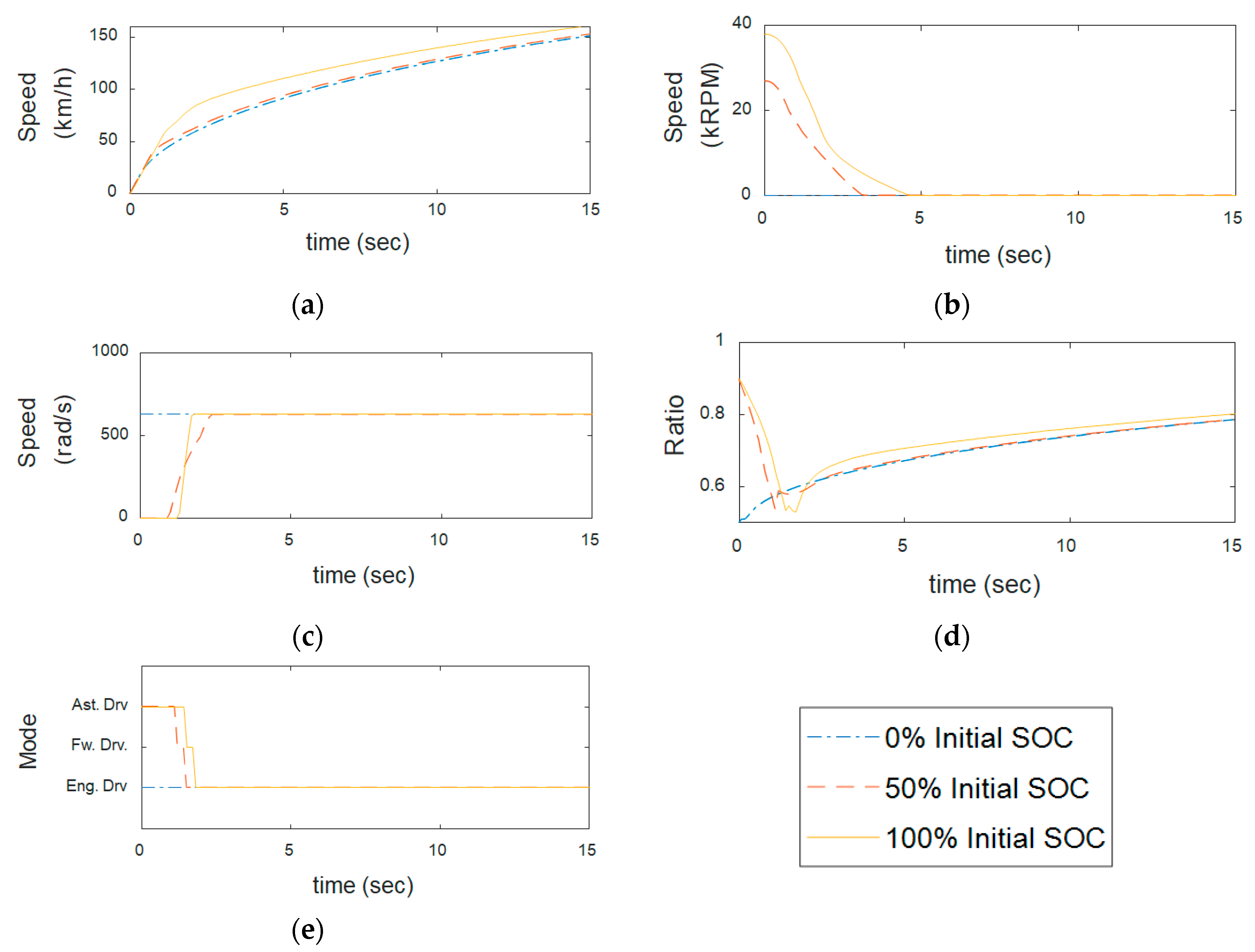
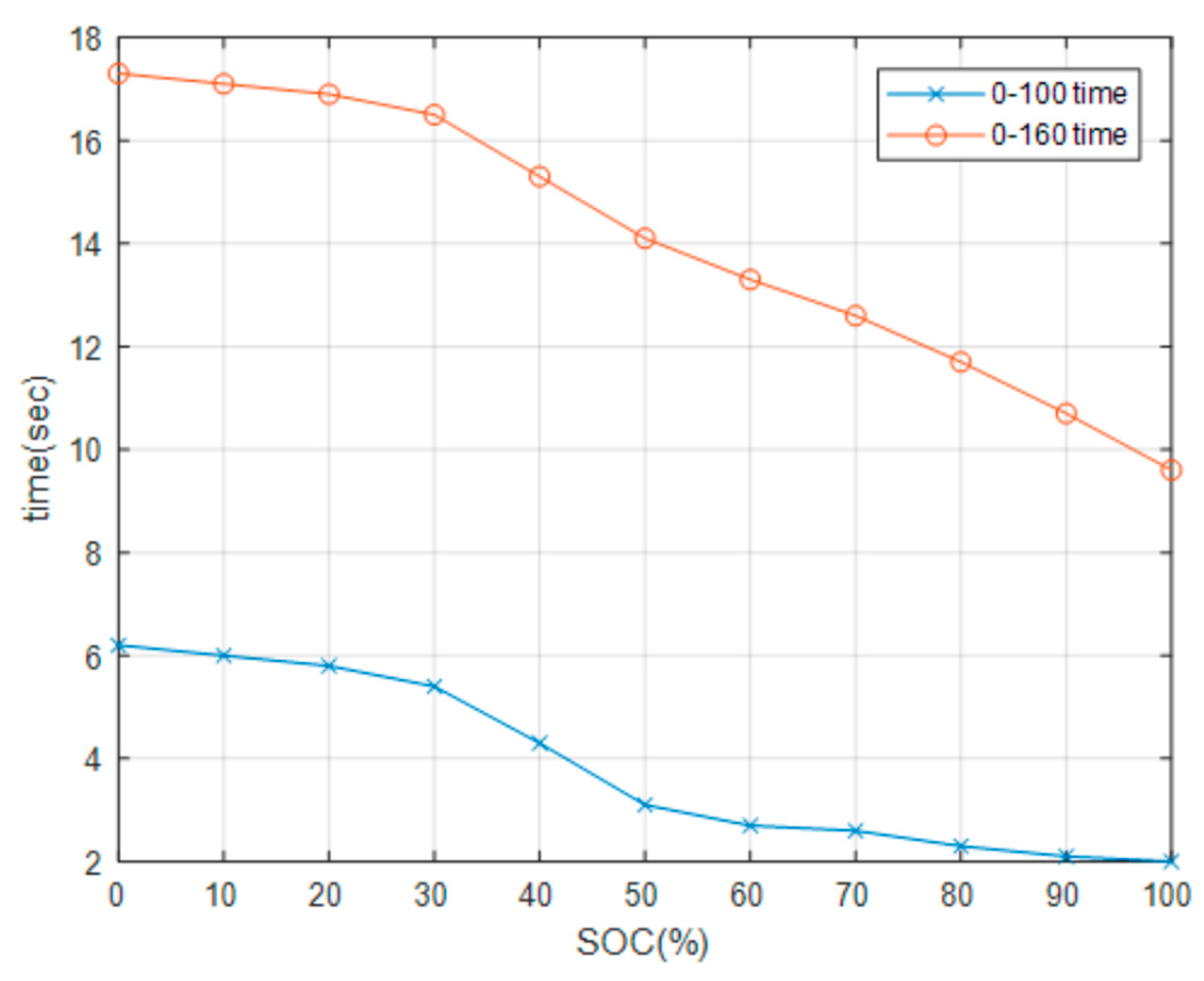

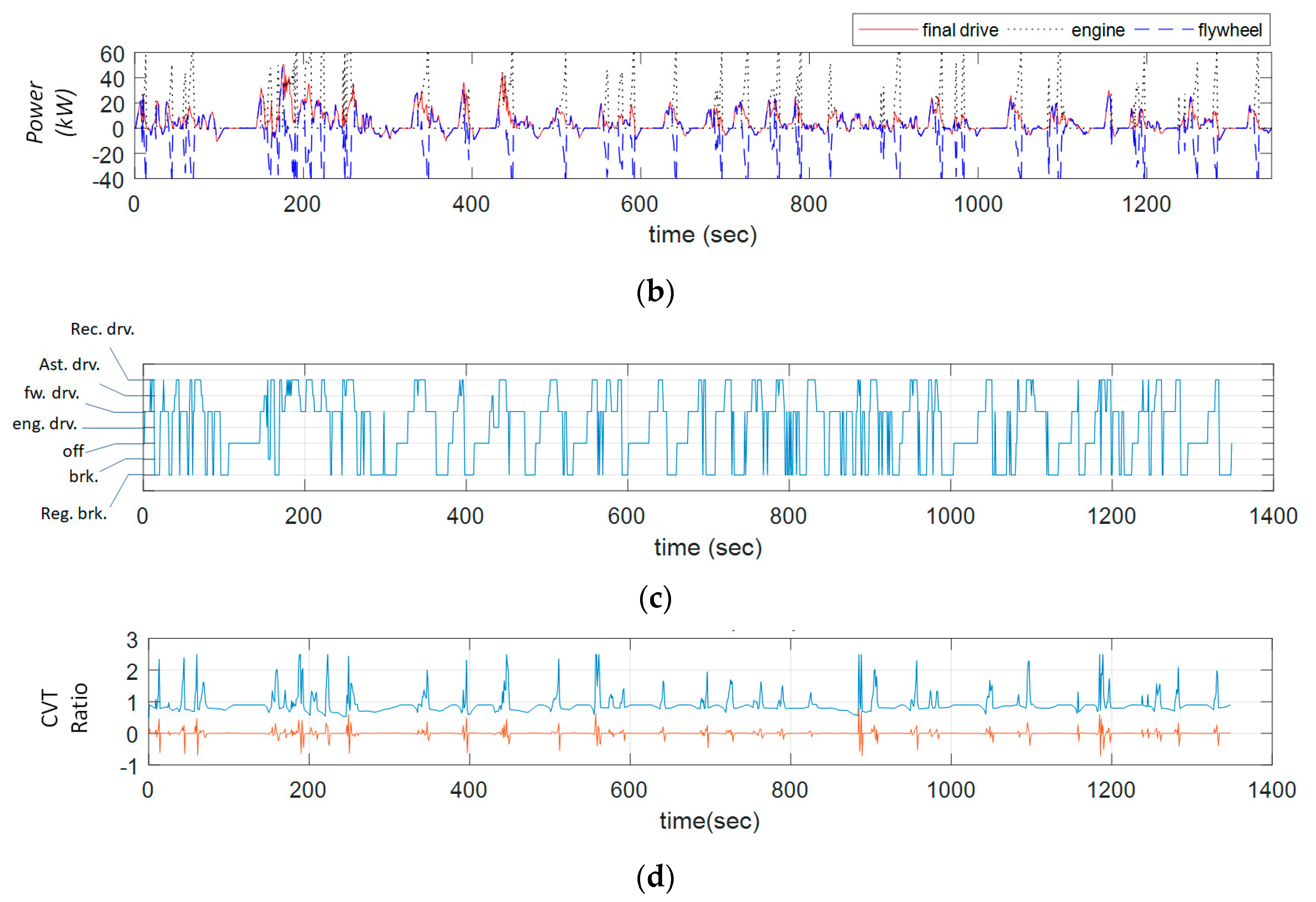
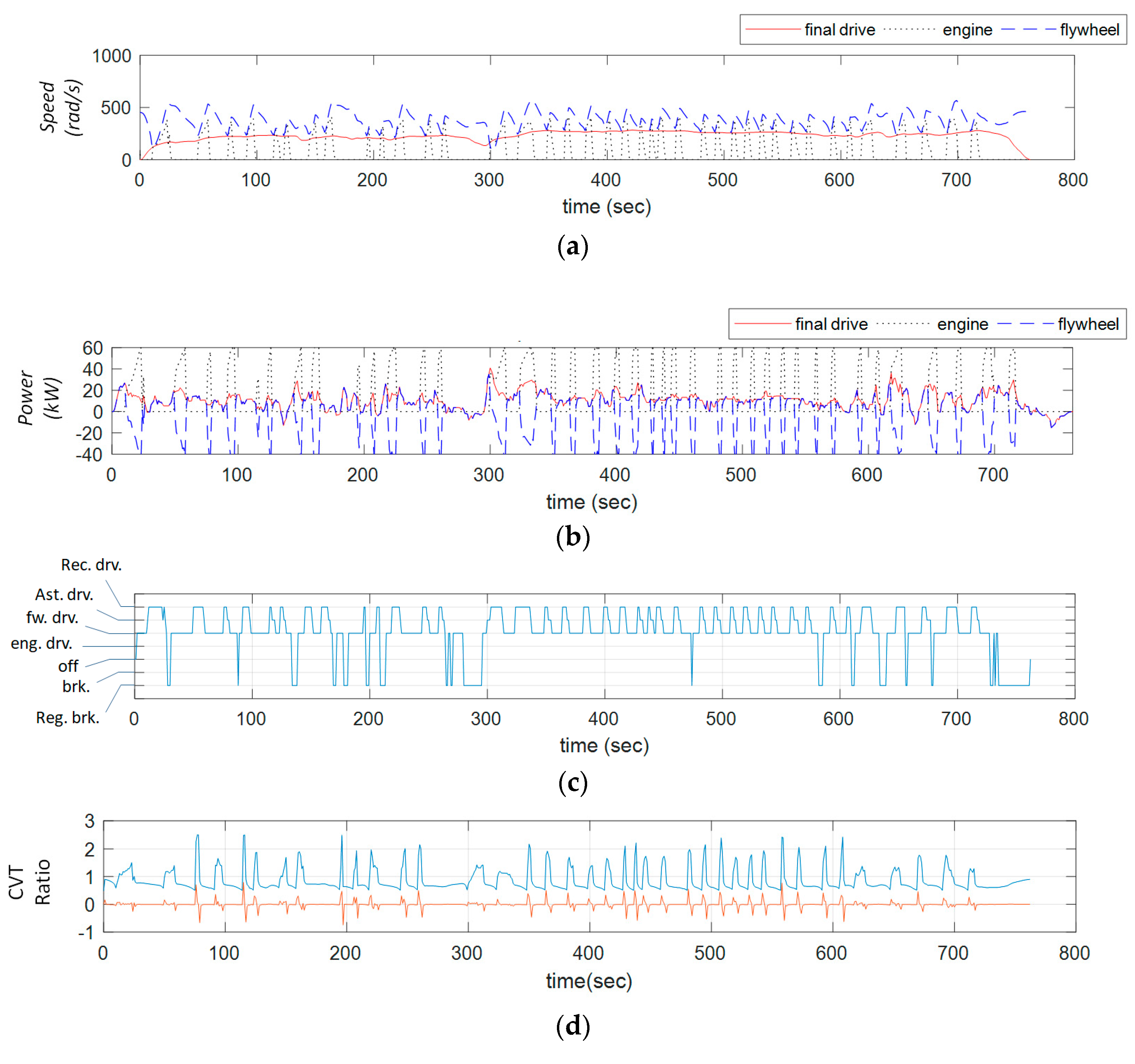
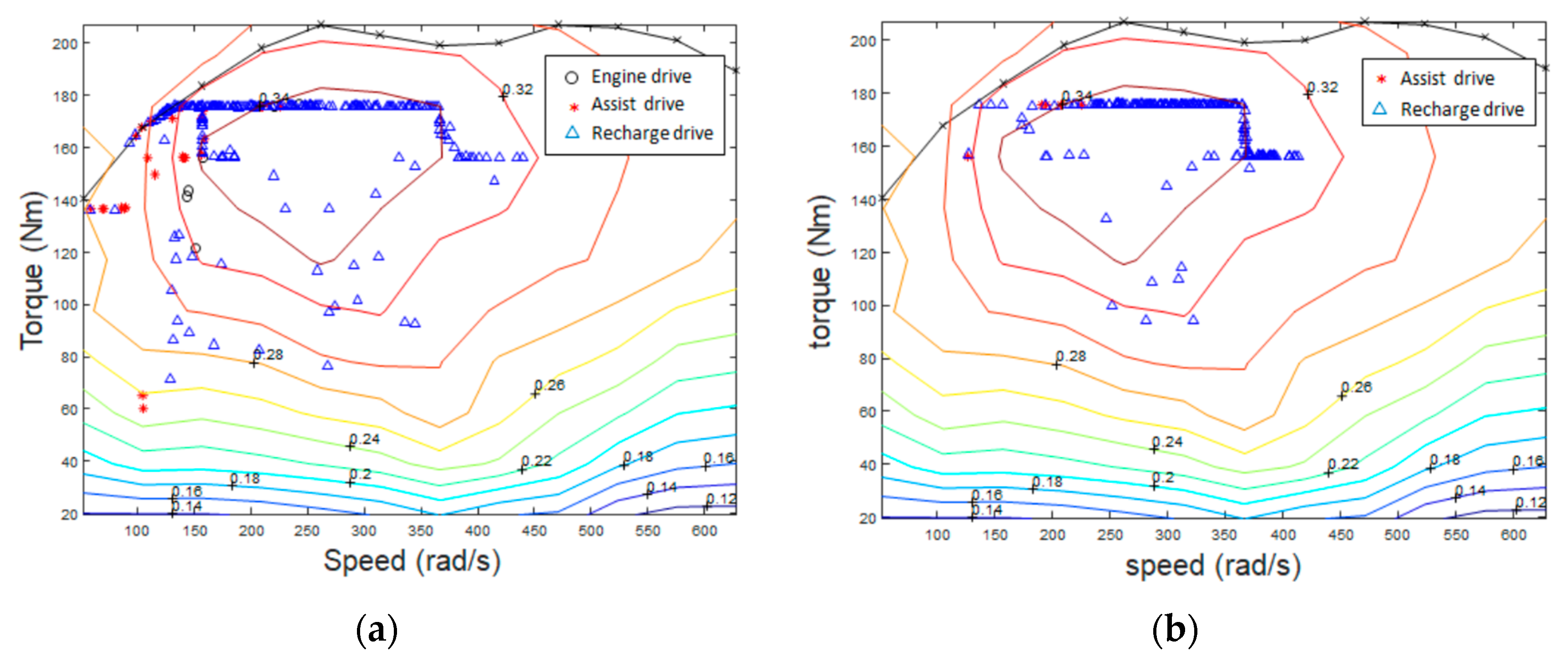
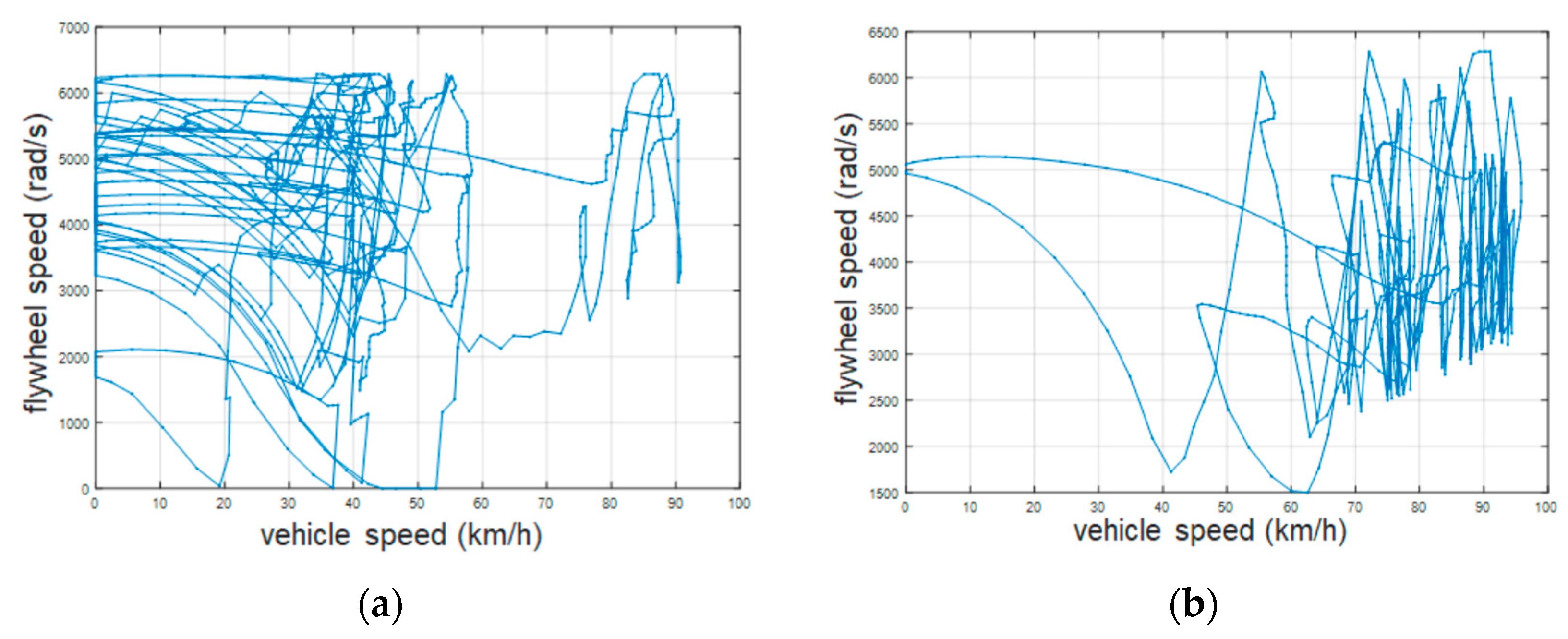

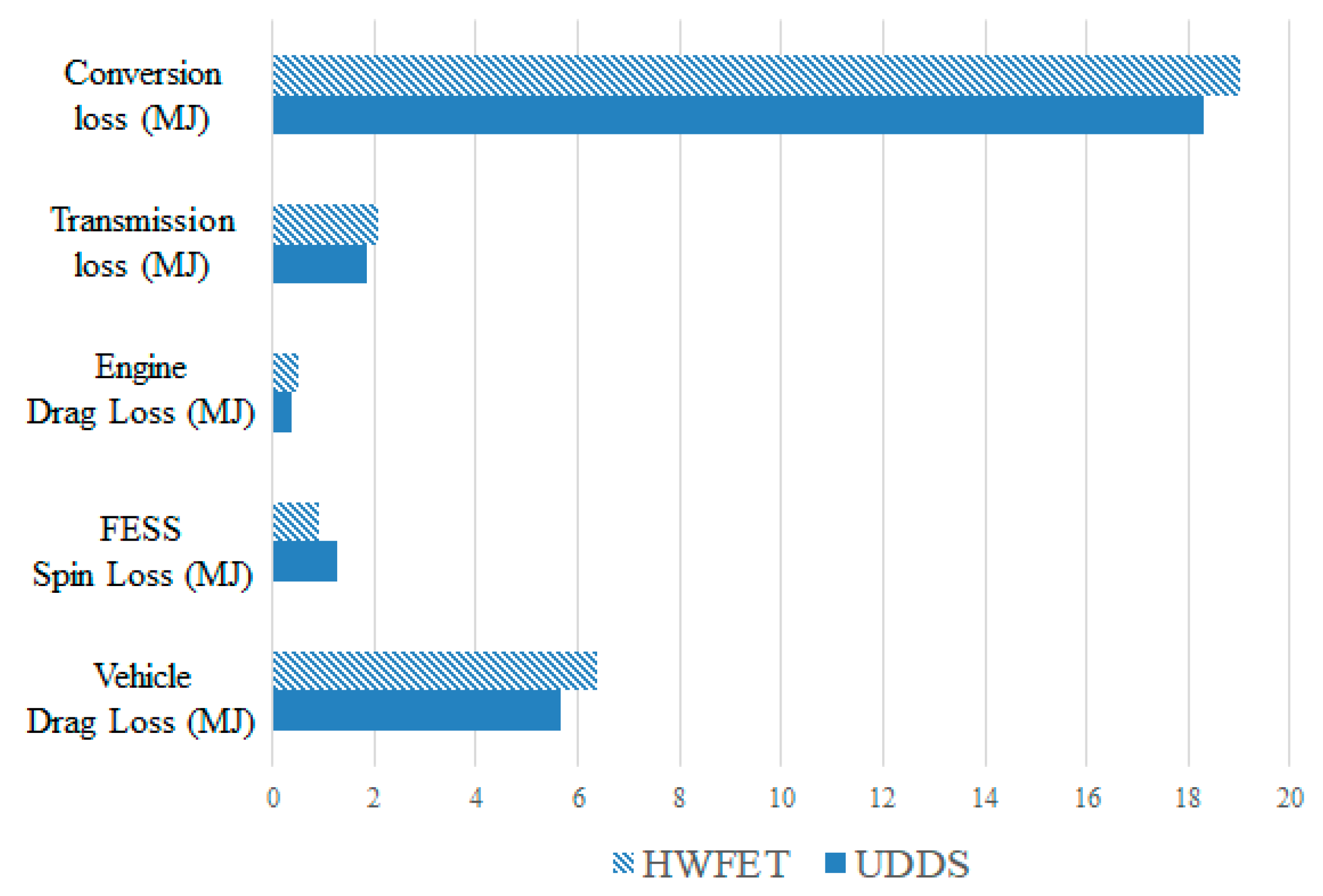
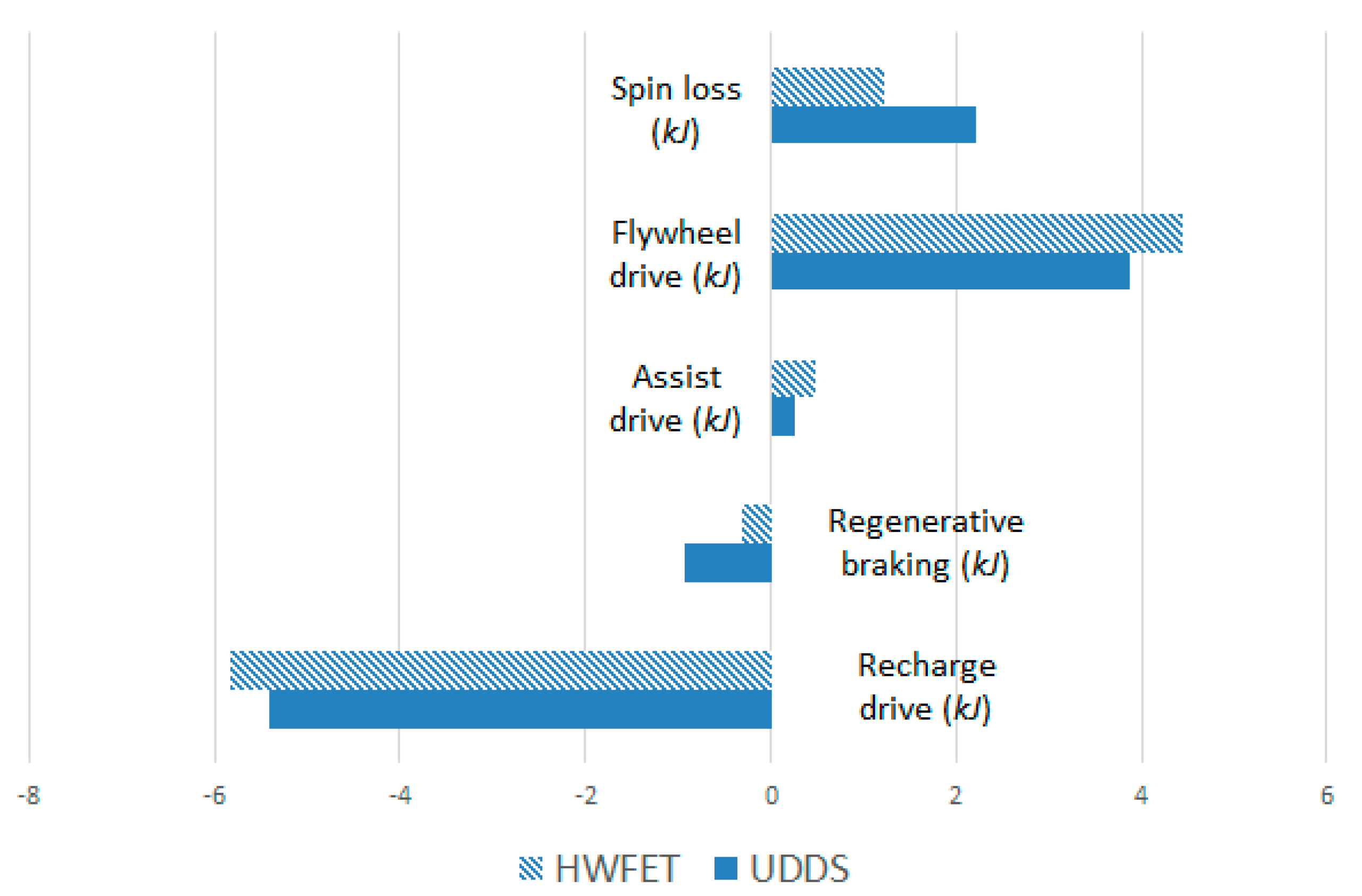
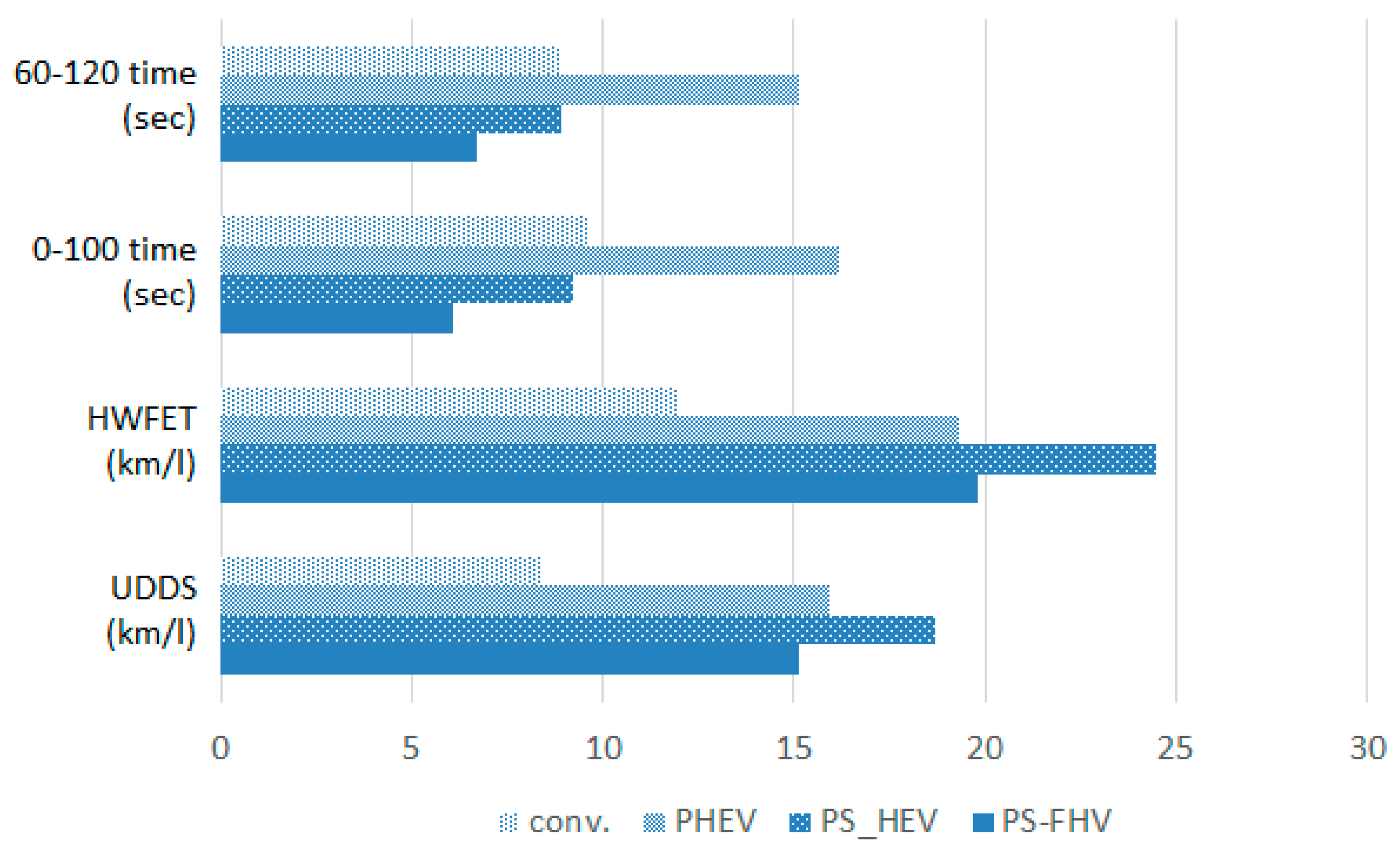
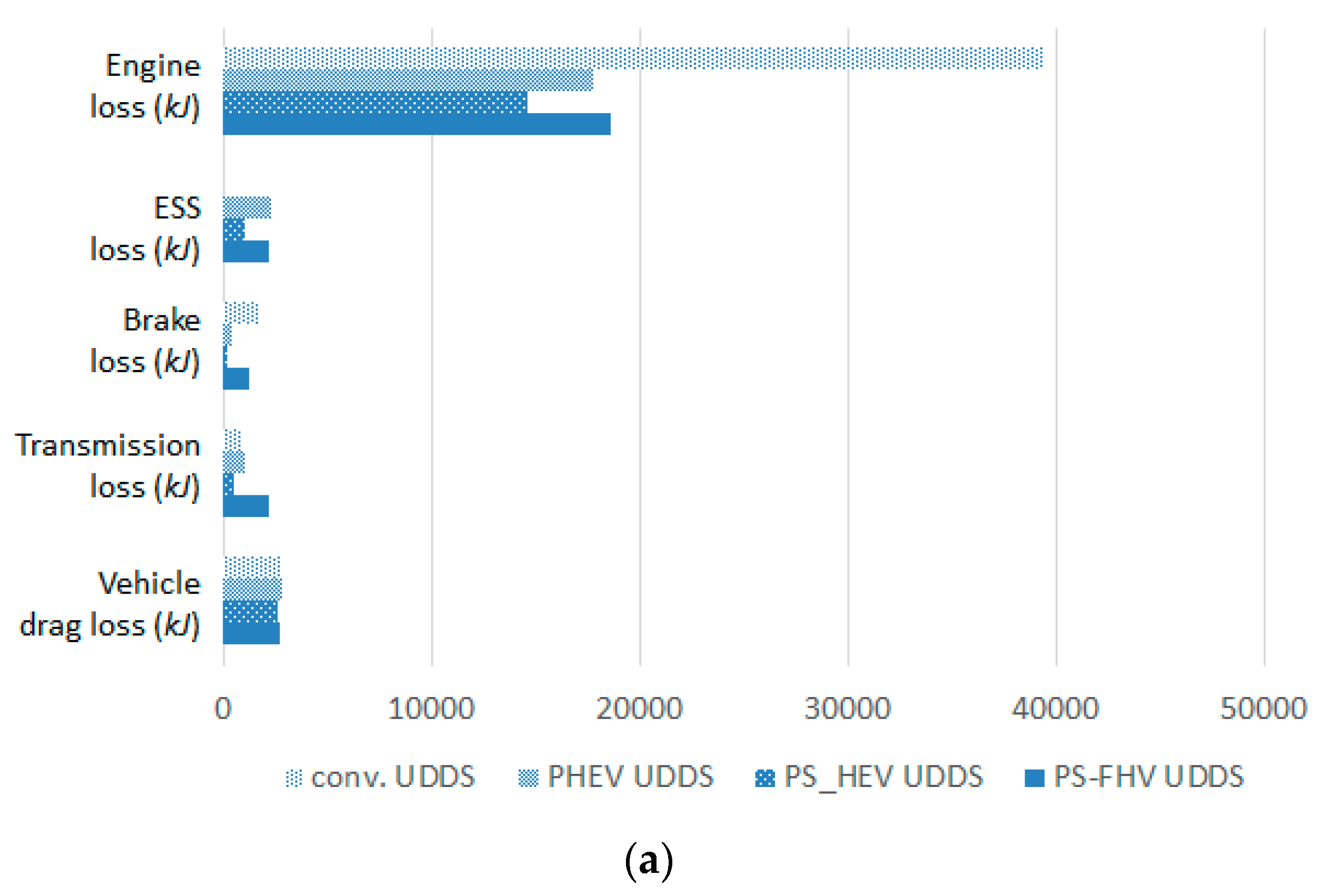

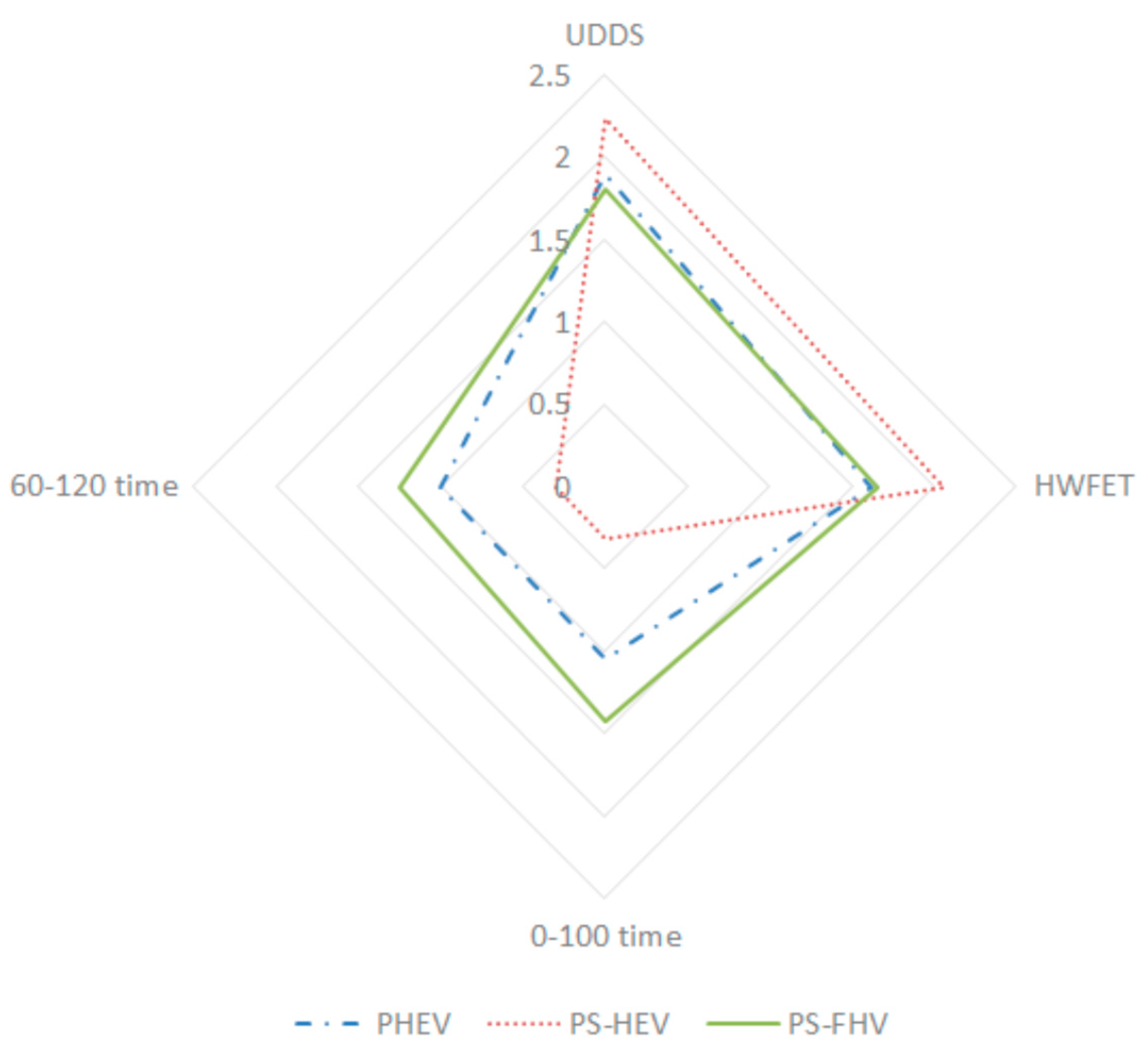
| Category | Parameters | Name | Note |
|---|---|---|---|
| State | Engine speed | Must be controlled | |
| FESS speed | |||
| Final drive speed | |||
| CVT ratio | |||
| Control input | Engine torque | - | |
| CVT shift speed | |||
| disturbance | Road load | Cannot be controlled; determined by vehicle speed and road conditions |
| Vehicle | Transmission | Engine | FESS | ||||
|---|---|---|---|---|---|---|---|
| Mass (kg) | 1221 | Mass (kg) | 157 | Mass (kg) | 331 | Mass (kg) | 25 |
| Friction coefficient | 0.09 | PGS ratio1 | = 0.37 | Inertia (kg·m2) | 0.18 | Inertia (kg·m2) | 0.054 |
| = 0.66 | |||||||
| = 0.33 | |||||||
| Air drag coefficient | 0.26 | CVT range | 2.5 | Max. power (kW) | 119 @ 6000 rpm | Max. speed (kRPM) | 60 |
| Reduction gear ratios | 2.22 5.95 | Max. torque (N·m2) | 201 @ 5500 rpm | ||||
| Drive Cycle | Initial SOC (%) | Final SOC (%) | Fuel Economy (km/L) |
|---|---|---|---|
| HWFET cycle | 63 | 63.1 | 19.8 |
| UDDS cycle | 60.5 | 60.5 | 15.1 |
© 2018 by the authors. Licensee MDPI, Basel, Switzerland. This article is an open access article distributed under the terms and conditions of the Creative Commons Attribution (CC BY) license (http://creativecommons.org/licenses/by/4.0/).
Share and Cite
Song, C.; Kum, D.; Kim, K.-S. Feasibility Analysis and Performance Evaluation of a Novel Power-Split Flywheel Hybrid Vehicle. Energies 2018, 11, 1744. https://doi.org/10.3390/en11071744
Song C, Kum D, Kim K-S. Feasibility Analysis and Performance Evaluation of a Novel Power-Split Flywheel Hybrid Vehicle. Energies. 2018; 11(7):1744. https://doi.org/10.3390/en11071744
Chicago/Turabian StyleSong, Chiwoong, Dongsuk Kum, and Kyung-Soo Kim. 2018. "Feasibility Analysis and Performance Evaluation of a Novel Power-Split Flywheel Hybrid Vehicle" Energies 11, no. 7: 1744. https://doi.org/10.3390/en11071744
APA StyleSong, C., Kum, D., & Kim, K.-S. (2018). Feasibility Analysis and Performance Evaluation of a Novel Power-Split Flywheel Hybrid Vehicle. Energies, 11(7), 1744. https://doi.org/10.3390/en11071744




